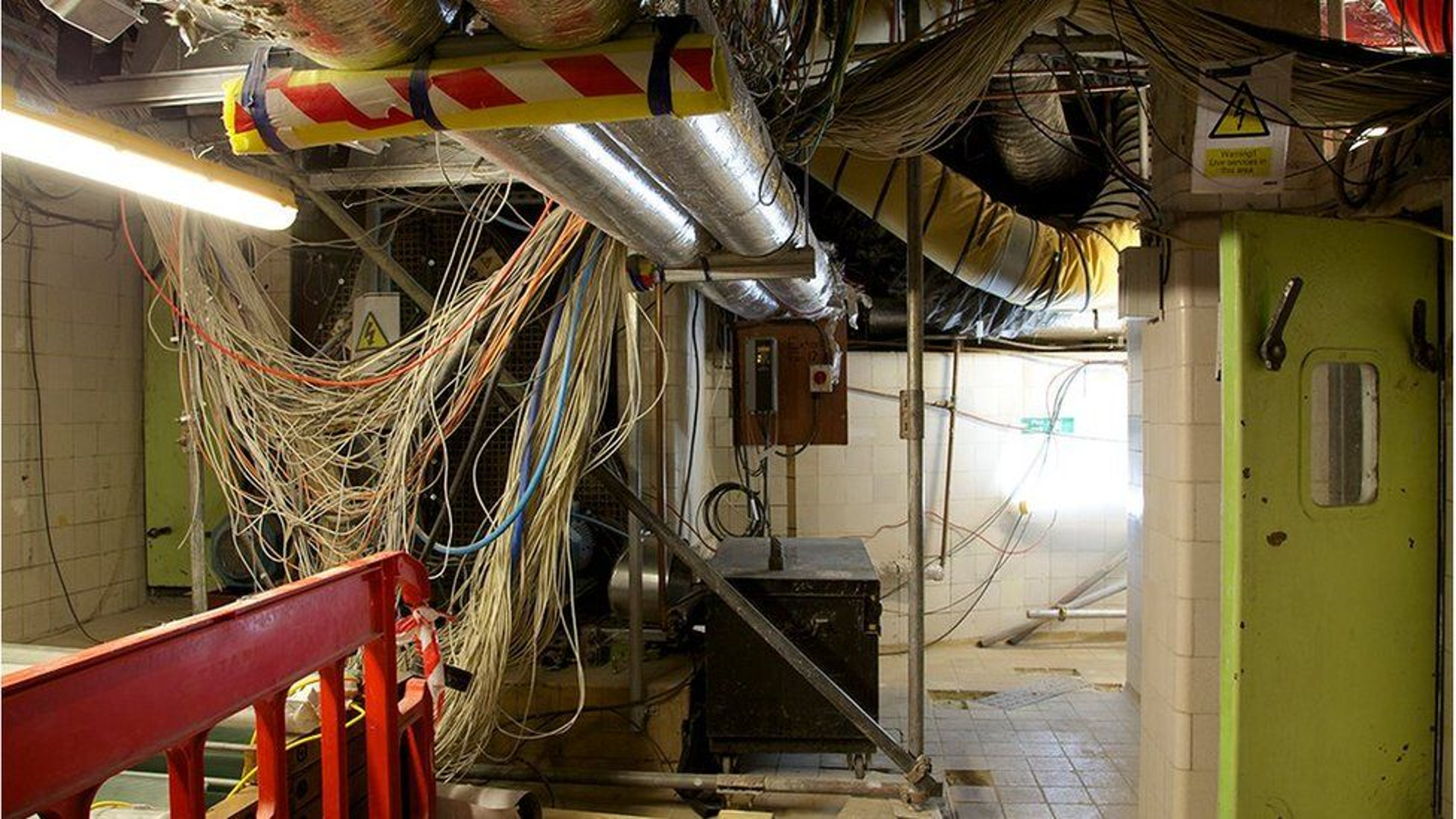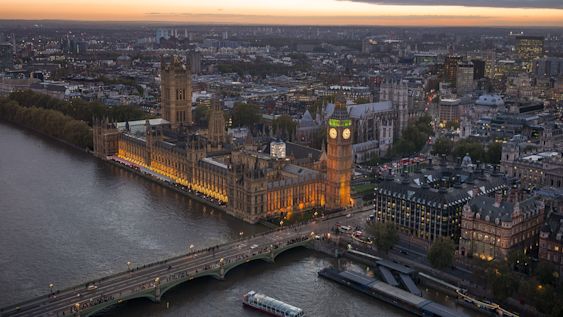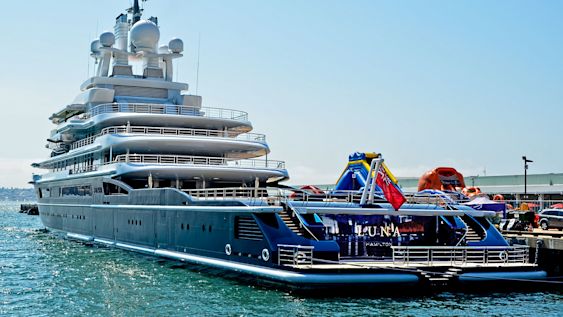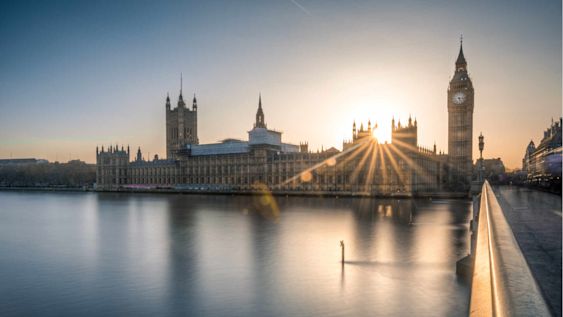
Written evidence to the House of Commons Public Accounts Committee: the Restoration and Renewal of Parliament
Our submission to the Public Accounts Committee highlighted the financial and practical challenges that MPs face in deciding the fate of Parliament’s Restoration and Renewal programme. We particularly questioned the viability of the proposal to continue operating the House of Commons Chamber in the middle of a building site.
This evidence was submitted to the House of Commons Public Accounts Committee inquiry on the Restoration and Renewal of Parliament on 7 March 2022, and was published by the Committee on 14 March 2022.
This submission covers:
- Cost and value for money assessments
- Operating a legislature in the middle of a building site
- Governance
- Sponsor Body: an absence of political antennae?
- Sponsor Body: the limits of public engagement
- What has happened to ‘renewal’?
- What are the legacy opportunities?
Background
1. Since the Committee launched its inquiry following publication of the latest National Audit Office (NAO) report on Restoration and Renewal (R&R) in January 2022, there have been two significant developments:
- the decision by the House of Commons Commission at the start of February 2022 to propose that the governance arrangements for the R&R project should be torn up, with the functions of the R&R Sponsor Body transferred to a “new, separate department serving both Houses, with its head formally accountable to the Clerk of the House or the Clerks of both Houses and ultimately the Commissions”;1 and
- publication later in February of the Sponsor Body’s Impact Study: proposals for a full and partial decant, and a continued presence on the parliamentary estate.2
This submission focuses primarily on issues related to these developments.
2. We recognise that the costs of the R&R project are eye-watering, and the prospect of the parliamentary estate being closed to parliamentarians and the public for at least 12 years and possibly as long as 20 is unpalatable. As regular visitors to the parliamentary estate, we are also concerned about the prospect of a catastrophic failure and permanent loss of the building and / or serious injury, or worse, befalling someone on the parliamentary estate.
3. Concern among MPs about the R&R project generally, and specifically about the Sponsor Body’s latest Impact Study proposals, seem to coalesce around four key issues:
- the overall cost of the R&R project to the public purse, and the extent to which what is proposed represents value for money;
- the length of time for which MPs must leave the parliamentary estate, if they do so at all;
- the length of time before any core works will begin; and
- whether the project should be limited to repairing and replacing failing parts of the building and its supporting technical systems or be more ambitious in also future-proofing the building as the home of a functioning democratic legislature for the next 100 years or more.
However, the inter-relationship between these issues, and the trade-offs that they may give rise to, have not always been made clear.
Cost and value for money
4. The Sponsor Body’s Impact Study reveals a range of eye-watering costs and timescales:
- full decant: £7-£13 billion and taking 19-28 years, including a decant period of 12-20 years;
- partial decant: £9.5-£18.5 billion and taking 26-43 years;
- no decant: £11-22 billion and taking 46-76 years.
5. The recent former Leader of the House of Commons, Jacob Rees-Mogg MP, set three requirements for his - and presumably therefore the government’s - support for the Restoration and Renewal Programme:
- the case must be “robust and evidence based”;
- it must deliver “value for money” and “cut out unnecessary spending”; and
- the plan for work must be up-to-date.3
6. It is hard to disagree with these three tests. They are clearly necessary. However, on their own they are not a sufficient basis for judging the project. What, for example, is the trade-off between safety, speed and savings in making a ‘value for money’ calculation? What is the order of priorities: minimising the overall costs, minimising the time MPs spend out of the building, minimising the risks to the safety of everyone on the Palace estate, or minimising the risk of catastrophic failure and permanent loss of the building?
7. Maintaining a ‘continued presence’ on the estate does not appear to be compatible with prioritisation of value for money if the latter is understood solely as minimising the overall cost. Multiple studies – reinforced by this latest Sponsor Body Impact Study – have found that remaining on the parliamentary estate for the duration of the work will cost more and the programme will take longer.
8. Any Member who is concerned about the project primarily on grounds of cost cannot credibly reject the decant proposal in favour of one of the continued presence options, when the latter will be much more expensive. If it is unacceptable to spend up to £13 billion (full decant) on R&R, how can it be acceptable to spend up to £18.5 or £22 billion (partial or no decant) instead?
9. Common sense also dictates that, although a decant from the building of between 12 and 20 years is deeply unpalatable, it is more acceptable than the notion that our national legislature should operate in the middle of a building site for 46 years and possibly as long as three-quarters of a century. The former is problematic; the latter is preposterous.
Operating a legislature in the middle of a building site
10. The Sponsor Body Impact Study concludes that if MPs stay in the Palace while the work is ongoing (that is, if there is only a partial or no decant), there are key risks to health and safety given the “complexity of operating parliamentary business surrounded by a live construction site.”
11. Noise and vibration could “increase to unacceptable levels”. MPs have a low threshold for disruption. If the work has to stop because it is disturbing parliamentary business, this will mean delays and additional costs.
12. In his remarks to the House on 11 March 2020, the then Leader of the House, Jacob Rees-Mogg MP, suggested that MPs could put up with “some discomfort” and “occasionally, a little bit of banging and noise being made”. “We cannot be too fussy about that”, he argued, “if we are to keep this as a working operational building.”4 But this is neither a serious nor credible approach. R&R will be the biggest and most complex heritage restoration project in the world. The level of disruption will be considerable and prolonged. If there is no decant, the Impact Study notes that with construction work going on around it the House of Commons will become “a distinct island surrounded by construction areas” and work will go on in and around the Commons Chamber for up to 30 years.5
13. Removal of asbestos is a key risk. The Impact Study records that the greatest above-ground concentration of asbestos is above the House of Commons Chamber itself. The minutes of the Sponsor Body board meeting on 6 December 2021 note that “The safe removal of asbestos, a highly regulated process, would take around two years with 90 dedicated staff on site.”6 As the Sponsor Body noted in a letter to the Public Accounts Committee in January 2021, the ongoing presence of MPs would be disruptive and run the risk of “potential recontamination of asbestos in previously decontaminated spaces.” 7 The Impact Study states that “having explored lessons learned from other refurbishment projects, it is known that users of operational areas adjacent to a construction site with asbestos removal activity have a very low tolerance of dust.” Since the Study was published it has been confirmed that in Autumn 2021 there was an asbestos-related incident as part of works carried out in Speaker’s House, and that potentially dozens of people may have been exposed. A temporary pause in the project had to be instituted. However, there has been no further information forthcoming in the public domain about this incident.
14. The Impact Study also notes that security risks increase considerably if Members remain on site while the work is ongoing. The “presence of a large construction workforce adjacent to ongoing Parliamentary business heightens overall security risk.” The Study also states that no secure means of access from Portcullis House into the Palace has been found for some of the period of work proposed.
15. Where fire is concerned, the Impact Study notes that the “pre-existing level of fire risk in the Commons Chamber is not reduced until completion” and the risk would therefore be sustained for decades. The surrounding construction activity and temporary services also compounds the level of fire risk.
16. There are also significant risks to parliamentary business. If Members do not decant from the estate, then in order to complete the works an extended summer recess period of three months, from mid-July to mid-October, would be required each year and it would not be possible to recall the House to sit in the Chamber for this period.8 This means that the House would be unable to sit for that 12-week period each year for somewhere between the 46 and 76 years that it is estimated it would take to complete the work.
17. It is important to note also that among the “essential and desirable functions” required for a continued presence in the House, the provision of space for the public – public viewing space, visitor reception area and external media interview area – are included as a highly desirable function but given the lowest-level priority.
18. As the Impact Study notes, “Delivering R&R around an operational House of Commons will introduce a level of disruption and nuisance that will be experienced for decades. The Houses will need to satisfy themselves that members and employees are prepared to continue to operate in such an environment.”
19. At present the Clerks of each House are the responsible officers with legal responsibility for the health and safety of Members and employees. Under the previous plans, if a full decant were to be instituted, legal responsibility for the safety of, and people on, the estate once all Members and staff had left the building would have passed to the Sponsor Body. If no decant takes place – if the legislature is operating in the middle of a building site – who will assume responsibility for these matters? As the then-Clerk of the Parliaments, Ed Ollard, noted to the Public Accounts Committee in July 2020, “control of the premises brings with it control of the risks”.9 Given the identified risks, would any member of staff be willing to assume such responsibilities?
20. Less than three years after the Sponsor Body was set up by statute, MPs in this Parliament propose to undo what was agreed by their predecessors. Given the ability of MPs to change their mind about this process, how likely is it that MPs in a future Parliament may deem the disruption and nuisance that surrounds them completely intolerable, forcing the work to come to an abrupt halt? What then would be the way forward? What would be the cost and risk implications?
Governance
21. When on 1 February 2022 the House of Commons Commission decided that it wished to replace the Sponsor Body with a new department, it effectively tore up the governance arrangements previously agreed by a Joint Committee of both Houses and enacted in law by an Act of Parliament which was subject to pre-legislative scrutiny by another Joint Committee of both Houses.
22. Less than three years after the Act was passed and the Sponsor Body was established, the House of Commons Commission proposes that the Body’s functions should be transferred to a new department “overseen by the House of Commissions in the short term to oversee the initial changes. A joint committee of both Houses supported by external expertise, should then be appointed to oversee the work in the long run, with powers delegated from the Commissions. Expenditure should be subject to an annual external review reporting to the Parliamentary Works Estimates Commission.”10
23. The Commission acknowledged “the risks in changing the governance structure and a new approach to the works and agreed to seek independent assurance of the viability in principle of these proposals”.11 But it remains unclear who will undertake that independent assurance and viability. Will it be the Infrastructure and Projects Authority? The IPA’s CEO, Nick Smallwood, has previously said that the R&R Programme has all “the hallmarks of being well set up”.12
24. What if the independent assurer finds that the Commission’s proposal is not robust and cannot be supported? The House of Lords Commission’s support for the abolition of the Sponsor Body and transfer of its functions to a joint committee is predicated on such assurances.
25. The timescales and cost implications of the decision to abolish the Sponsor Body are also unclear and will result in further delays and more expenditure on non-productive activity. The appointment process for the proposed Joint Committee is also unspecified and will be critical if this model is adopted.
26. Parliament legislated to set up independent governance bodies – the Parliamentary Works Sponsor Body and the R&R Delivery Authority – to reduce the prospect of political interference in, and micro-management of, the R&R Programme. This governance model was predicated on lessons learned from other major infrastructure delivery projects, most notably the London 2021 Olympic Games.
27. It is unclear why the Commons Commission now believes that a model comprising Clerks and Members represents a satisfactory solution to the governance problems facing the project, when previous parliamentary inquiries have deemed such a model inappropriate. The recent record of Commons control of infrastructure projects is mixed and does not inspire confidence. The Elizabeth Tower project ran two-and-a-half times over budget (from £29 million to £80 million). The Commons authorities also recently wrote off £70.2 million for the Northern Estates Project, having decided in November 2020 to close the project and adopt an alternative approach. This had the effect of shutting down the option for the House of Commons to decant to Richmond House, thereby stymying an earlier decision reached by the Joint Committee in 2016.
28. If and when a decision to transfer the functions of the Sponsor Body is formalised, it will require a Statutory Instrument subject to the ‘affirmative’ scrutiny procedure to be laid before Parliament (under section 10 of the Parliamentary Buildings (Restoration and Renewal) Act 2019). This would by default be subject to a debate of up to 90 minutes, which would normally take place in a Delegated Legislation Committee. Given the importance of the issue, the SI should instead be debated on the floor of the House for at least three hours.
29. If the governance change is made, then what lessons can be learnt from the experience of the last few years? How will MPs be bound to the project in the future? Once a decision has been made, how will they make it stick? What if the objectives of value for money, significantly reduced risk, and a minimal decant period are simply not compatible and Members struggle to reach a consensus? How feasible is it for the new department and the Delivery Authority to press ahead, spending vast sums of money, if the project could be brought to a grinding halt a couple of years later following a general election? If previous decisions about the location of the decant accommodation and the governance arrangements for R&R can be unpicked, then will some Members not want to revisit the idea of leaving the Palace altogether in favour of a cheaper, more modern legislative building at a different location?
Sponsor Body: an absence of political antennae?
30. The Sponsor Body must bear some responsibility for the situation in which it and the wider R&R project now find themselves.
31. It has been clear for some time that one of the main risks facing the R&R project is whether a political consensus would be built around the aims of the Programme. The vote to approve the R&R Programme, and a full decant, in the last Parliament was won with just a narrow majority, and parliamentary debates and questions on the subject since the last general election indicate a high level of uncertainty and concern among Members about the plans.
32. The level and modes of Member engagement undertaken by the Sponsor Body are unclear. The minutes of the Sponsor Board indicate that as of December 2021, the R&R Sponsor Body team engaged with 67 MPs last Autumn, compared to 194 Peers. Overall, this is just over 10% of all Members of the Commons. The Sponsor Body reported that “78% of Members had provided positive feedback on the Programme; 18% were neutral and just 4% voiced a negative opinion”.13
33. However, the purpose and framing of the parliamentary engagement are unclear: was the Sponsor Body merely providing information to Members? Was it explaining the merits of decant? Was it inviting Members to help shape the design plans? Were the engagements reactive to Member requests, or were they proactively pursued by the Sponsor Body?
34. When the Sponsor Body consulted on the Strategic Review in 2020, it reported that 63 MPs and 75 Peers responded.14 But that evidence base has never been published (the Hansard Society, in the interests of transparency, published its submission on its website.) Who were the parliamentarians who submitted responses? What was the political make-up of the engagement? Was it cross-party? Of Conservative Members, how many were Members of the government payroll vote? How many consultees voted for or against decant if they were in the House in 2018? How many submissions came from new Members, and how many from Members who had been in the House since before 2015? Did MPs provide evidence about their priorities and the nature of the compromises that they were prepared to accept?
35. Given that the ‘Challenge Panel’ established for the Strategic Review lacked any political balance and was weighted in favour of government rather than parliamentary representatives, consultation responses might have provided some balance of opinion on a cross-party basis; but without publishing the evidence we do not know.
36. The Sponsor Body Board engages the involvement of four MPs and four Peers but there have been problems with it. The Commons initially nominated no female Member and the membership has been subject to some churn. The means by which the parties choose which MPs sit on the Board is not transparent.
37. One of the problems with the governance model is that it lacks the involvement of a highly trusted ambassadorial figure – someone who can do for the R&R project what the late Tessa Jowell did for the Olympics: a good communicator, trusted by all parties, and ideally with experience of government as well as Parliament.
Sponsor Body: the limits of public engagement
38.The Parliamentary Buildings (Restoration and Renewal) Act 2019 imposes a legal obligation on the Sponsor Body to promote public understanding of the purposes of the Restoration and Renewal Programme and seek the public’s views on strategic objectives and decisions.
39. The Sponsor Body’s public engagement strategy states that it will “seek to connect with as many people as possible through the different stages of the Restoration and Renewal Programme, ensuring that everyone across the UK who wants to has the chance to be informed and involved.”15
40 However, the selection and prioritisation of the public engagement work is not clear. For example, was it a good use of time and resources at this stage of the project to be delivering events involving schoolchildren, when the politicians have not yet been fully engaged? It is welcome that public engagement recognises that many of the end-users of the restored Palace are currently in school, but might time have been better spent engaging key opinion formers in a ‘hearts and minds’ campaign in favour of the project, with events for schools to come later once the all-important Business Case was secured? The Sponsor Body has said that events with schools help it “gather qualitative data on the opinions and feelings of young people about the Palace” but how is that data being used to inform the project at this particular stage?16
41. The Sponsor Body could and should have been more transparent about its activities. In addition to the lack of transparency around the Strategic Review consultation, regular quantitative polling has reportedly been undertaken but the results have not been published. Deliberative Panel sessions have also been held across the country, reflecting on the options, with the sessions reportedly showing strong support for the Programme. But what is the nature of the evidence base? Do they, for example, provide any valuable information about the public’s attitude to the trade-offs between cost, speed, and appetite for risk? Are Ministers right in thinking that the public will simply not accept costs on the scale proposed? Or can the public see a ‘bigger picture’ opportunity with this project, in the interests of our democracy? What has happened to ‘renewal’?
42. The R&R project encompasses ‘restoration’ and ‘renewal’ but the Sponsor Body’s focus has been almost entirely on ‘restoration’. When questioned about how the project might fit in with issues of democratic renewal, or about what changes might be made to how Parliament operates in future, the CEO of the Sponsor Body has firmly stated that her role is “to oversee and deliver the building for you”; how it works is a matter for both Houses.17
43. In a letter to the Estimates Commission, the Sponsor Body made clear that “Changes to the working practices of Parliament are not for the Programme to decide or propose.” It deemed its role to be limited to “supporting Parliament to establish and describe Parliament’s User Requirements for a renewed and restored Palace”. 18
44. However, the then-Chief Secretary to the Treasury, Steve Barclay MP, in a letter to the Estimates Commission Chair, Dame Eleanor Laing MP, wrote in March 2021: “I would encourage the Sponsor Body to think more radically and innovatively about how changes in ways of working in response to Covid-19, and the experience of virtual and hybrid working in Parliament in particular, could continue to play a role in delivery plans for the restoration works”.19
45. But the Sponsor Body has continued to take a passive role in relation to ‘renewal’. There does not appear to be a single parliamentary body in the Commons tasked with undertaking this work; it has in effect fallen to an ad hoc mixture of the Commission and the parliamentary members of the Sponsor Body Board. A dedicated Committee of the House (or a Joint Committee of both Houses) might have been a better model to develop this area of work, with its findings feeding directly into the Sponsor Body. Such a Committee could have been tasked with looking at the minimum and maximum opportunities of decant, and at the procedural and participation trade-offs involved in a series of options based on user requirements in 2022 but also looking ahead into the future, informed by Members’ experience of the virtual Parliament. It could also have focused on legacy objectives.
What are the legacy opportunities?
46. The ‘legacy opportunities’ of R&R that have been discussed to date appear to stretch no further than improvements to disability access on the parliamentary estate and an apprenticeship programme to benefit young people across the UK. Surely these ought to be the floor, not the ceiling, of ambition for the project?
47. As long as MPs continue going round in circles about the decant decision, the wider opportunities that the project presents in terms of ‘Renewal’ as well as ‘Restoration’ are not being considered. The project is debated entirely through the prism of ‘cost’ and ‘risk’, with little thought given to ‘potential’ and ‘opportunity’.
48. Yet the refurbishment of the Palace presents an opportunity that comes once in 150 years to transform the leading institution of our democracy and its environs, revitalising the democratic space to support a legislature fit for the 21st century. It is a significant opportunity to make a major national statement about the future of our democracy and the state of our public realm.
49. There has been understandable concern that the proposed decant buildings – the QEII Conference Centre and, originally, Richmond House – will be expensive ‘white elephants’. But this need not be so, if the project is injected with some imagination and ambition. Ten years ago, the Hansard Society published a report – ‘A Place for People: Proposals for Enhancing Visitor Engagement with Parliament’s Environs’20 – which put forward a range of ideas to upgrade the role of Parliament Square and significantly enhance the visitor experience at Westminster. Our report proposed the creation of a Westminster World Heritage Site Visitor Centre in the QEII Conference Centre.
50. Westminster is an iconic international attraction: it deserves a facility of international standing to serve those who visit each year. The Centre could be developed, after Parliament is back in the Palace, to provide exhibition and interpretation space focusing on the history and constitutional relationships of the institutions that border Parliament Square: Parliament, Westminster Abbey, the Supreme Court and Whitehall. Dedicated exhibition space could explain the work and function of Parliament and its Members; Parliament’s art and archival collections could at last be made properly accessible to the public. Rather than returning to Victoria Tower, the archives could be moved to a dedicated space in the Centre, providing a base for future parliamentary scholarship. Refreshment and retail facilities, event and media space would provide an income stream.
51. The location of the originally proposed decant venues, beyond the current parliamentary estate perimeter, also highlights the opportunity to unlock the potential of Parliament Square, not least through part-pedestrianisation. R&R presents a vital opportunity to integrate the renewal of the Palace into a more ambitious and creative re-think of the purpose of the surrounding area. Unlocking the potential of Parliament’s environs should be an integral part of the R&R project, to deliver a strong legacy in terms of public appreciation of, and engagement with, the site and its historical and constitutional significance, as well as enhanced attractiveness to visitors. At present, there is little evidence of joined-up thinking even to link R&R to existing projects affecting Parliament’s environs, such as the future of the proposed Holocaust Memorial in Victoria Tower Gardens. A masterplan is sorely needed.
Symbolism: confident ambition or decreptitude?
52. Some Members have previously expressed concern about the symbolic and reputational implications of MPs vacating the Palace of Westminster for a lengthy period. But the R&R project is unprecedented in scale. It will be the most complex renovation programme of any single building the UK has ever seen and will be the biggest heritage restoration project of its kind anywhere in the world. Moving out to facilitate the work – to preserve the premier institution of our democracy for generations to come – will send a confident and powerful message all of its own. In contrast, choosing to stay in situ and run our national legislature in the middle of a building site for decades will send out an entirely different and less compelling message about the extent to which we truly cherish our parliamentary democracy.
Picture credit: Basement cabling in the Palace of Westminster, Houses of Parliament Restoration and Renewal Programme
S. Johnson, Chief Executive, Parliamentary Works Sponsor Body, Essential Scheme: Initial Assessment of Cost and Schedule; and Continued Presence: Summary of Impact Study, Annex, Continued Presence, November 2021 ↩
House of Commons, Hansard, 16 July 2020, vol. 679, col. 1736 ↩
House of Commons, Hansard, 11 March 2021, vol. 690, col. 1018 ↩
S. Johnson, Chief Executive, Parliamentary Works Sponsor Body, Essential Scheme: Initial Assessment of Cost and Schedule; and Continued Presence: Summary of Impact Study, Annex, Continued Presence, November 2021, p.5 ↩
Restoration & Renewal Sponsor Body, Minutes of the meeting of the Sponsor Board held on 6 December 2021, para. 5.6 ↩
Letter from Sarah Johnson, Chief Executive Restoration and Renewal Sponsor Body, to Meg Hillier MP, Chair of the Committee of Public Accounts, 5 January 2021 ↩
S. Johnson, Chief Executive, Parliamentary Works Sponsor Body, Essential Scheme: Initial Assessment of Cost and Schedule; and Continued Presence: Summary of Impact Study, Annex, Continued Presence, November 2021, p.4 ↩
House of Commons Public Accounts Committee, Oral Evidence: Restoration and Renewal, HC 549, 21 July 2020, Q6 ↩
House of Commons Commission/MEC, minutes, 1 February 2022 ↩
House of Commons Commission/MEC, minutes, 1 February 2022 ↩
House of Commons Public Accounts Committee, Oral Evidence: Lessons from major projects and programmes, HC 694, 30 November 2020, Q28 ↩
Restoration & Renewal Sponsor Body, Minutes of the meeting of the Sponsor Board held on 6 December 2021, para. 3.3 ↩
Restoration & Renewal Programme, Strategic Review Annexes, Annex E: Overview and Outcome of Stakeholder Engagement, March 2021 ↩
Restoration & Renewal Programme, Public Engagement Strategy, December 2020, p.11 ↩
Restoration & Renewal Programme, Sponsor Body Quarter 1 Report, April-June 2021, para 17 ↩
House of Commons Public Accounts Committee, Oral Evidence: Restoration and Renewal), HC 549, 21 July 2020, Q55 ↩
Letter from Sarah Johnson, Chief Executive, Restoration & Renewal Sponsor Body, Response to Estimate Commission follow-up questions, para. 10, p.6 ↩
The Parliamentary Works Estimates Commission, Parliamentary Works Sponsor Body: Main Supply Estimate 2021-22: Comments from the Parliamentary Works Estimates Commission and the Treasury, HC 1382, 27 April 2021, p.4 ↩
Hansard Society (2011), A Place for People: Proposals for Enhancing Visitor Engagement with Parliament’s Environs (London: Hansard Society) ↩
Enjoy reading this? Please consider sharing it
Latest

Compendium of Legislative Standards for Delegating Powers in Primary Legislation
The scope and design of the delegation of legislative powers in any Bill affects the long-term balance of power between…Parliament and Government. The House of Lords Delegated Powers and Regulatory Reform Committee (DPRRC) scrutinises all such delegation. This report distils standards for the delegation of powers from 101 DPRRC reports from 2017 to 2021.

Genetically modified organisms: Primary or delegated legislation?
A Statutory Instrument comes into force on 11 April that changes the legal requirements for the release of certain types… of genetically modified plants. Some argue that the changes should have been made by primary, rather than delegated, legislation. Where does the boundary between the two lie?

Constitution and Governance in the UK: Parliament and Legislation
The Brexit process, the pandemic and the approach of the Johnson Government have all tended towards Parliament’s margina…lisation and the accretion of executive power. For UK in a Changing Europe’s report on the constitutional landscape, we show how – in the legislative process and control of public money and executive action, including delegated legislation.

What role does the UK Parliament play in sanctioning an individual? [Video]
Sanctions are imposed on an individual in two stages - by Ministers first making regulations and secondly designating th…e individual, using a power in those regulations. Parliament has a role in the first stage, but not the second.

Written evidence to the House of Commons European Scrutiny Committee: Retained E…U Law: Where next?
Our submission to the House of Commons European Scrutiny Committee inquiry into retained EU law (REUL) placed the issue…in the context of our Delegated Legislation Review. It discussed REUL’s diversity and amendment; the people and organisations to whom REUL amendment may matter; and parliamentary scrutiny of delegated legislation arising from amending REUL.

The Economic Crime (Transparency and Enforcement) Bill: four delegated powers th…at should be amended to improve future accountability to Parliament
The Bill seeks to crack down on ‘dirty money’ and corrupt elites in the UK and is being expedited through Parliament fol…lowing Russia’s invasion of Ukraine. This briefing identifies four delegated powers in the Bill that should be amended to ensure future accountability to Parliament.